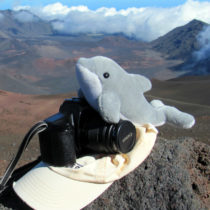Landscape Architecture for Landscape Architects › Forums › GENERAL DISCUSSION › GIS in landscape architecture
- This topic has 1 reply, 10 voices, and was last updated 14 years ago by
 Jonathan Nelsen.
Jonathan Nelsen.
-
AuthorPosts
-
May 3, 2011 at 7:31 pm #163106
 Roland BeinertParticipant
Roland BeinertParticipantThere seems to be an emphasis on GIS in the landscape architecture departments at both universities I’ve gone to. There was a half semester course at the University of Wisconsin where I got my bachelors degree. Here at the University of Idaho, there are two full semester courses. But the firms that are hiring right now seem to care only about CAD and 3-d programs. I understand why firms want employees to be good at CAD and sketchup, but why is there so little interest in GIS?
May 3, 2011 at 8:06 pm #163120 Jonathan NelsenParticipant
Jonathan NelsenParticipantIts coming….At the career fair at my school (Iowa State University) I talked with several firms who were looking to start GIS departments in the near future. Its not easy to get started with, all that data is not free, and without data the software doesnt do much good. I’m not sure about other places, but in Iowa you can access a lot of GIS data for free through the DNR. When I was working on a project in Denver, all the data that I was finding cost money and was not cheap.
May 3, 2011 at 8:11 pm #163119 Roland BeinertParticipant
Roland BeinertParticipantThat’s true. It can be expensive. Idaho has a website called Inside Idaho, where you can get free data. I think a few other states have similar websites.
May 3, 2011 at 8:38 pm #163118 Jason T. RadiceParticipant
Jason T. RadiceParticipantGIS has very limited applications in the private sector (more in the public sector) because it is very expensive for the results it yeilds. It seems to be most beneficial for regional and super-regional planners so they can create kinda-fancy graphics. I, too , ran into the overemphasis on GIS on a recent stint into an MLA. In certain sectors of the industry, it can be kind of helpful in doing demographic searches. Planners use it a lot more than LAs who have more of a design emphasis. It can be helpful for regional applications, but I found it to be very unreliable and unstable, and I was able to get better info using traditional methods in a shorter period of time.
Also, the data is a total crapshoot. Like trying to do weather forecasts with a dartboard. It is fine for keeping property records (which is what it was developed for), but to base design or even site location on, the data bank just is not accurate enough or updated enough. Keep in mind, as soon as one piece of property changes hands, your $500 data set is worthless. And you have to remember just how they got the data, property lines overlayed on aerial photos? Lot lines? completely wrong. Topography? Forget it. Crap in-crap out. As with any analysis tool, you still have to know what you are doing in reading the data the machine comes out with, rather than trusting the results of a GIS query. You need to be able to verify the results, and that is becoming a lost art. Far too many rely on the tool alone, leading to poor siting and design.
Many communities keep updated property data online with a web application for FREE. That is all you really need to know.
The future is integrated documents, where civil, architectural, planning agencies, DOT, DPW, and LAs all share a large BIM model that the municipality owns. As work is done, the model changes in near real-time. Everything is modeled in 3D and is survey-accurate (including pipe diameters and their exact locations). GIS data can integrate in this model, but it will no longer be a separate entity. So why the emphasis on GIS in LA schools? Simple. ESRI pretty much gives them the software so they have the leg-up on the industry when the students graduate. Autodesk did it, Adobe did it (there were better photo-editing software than early Photoshop, but because so many students had exposure to it college, it became industry standard). Even 3d went through it. I was in school for the photoshop-corel war, and the 3D wars with 3D Studio-Form Z and many, many others.
May 3, 2011 at 8:52 pm #163117 Jonathan NelsenParticipant
Jonathan NelsenParticipantAt my school (ISU) we are required to take one studio that focuses on design using GIS. The first project we did was taking a site in the City of Ames and converting it to a habitat for a certain species of animal. We used GIS to look at soil conditions, slope, etc. The second project we had to design a community of 400 single family homes, agricultural areas to produce food for the community, as well as expand on existing trail systems and recreational areas. We were able to use weighted overlay functions in GIS to determine which areas would be most suitable for each of the uses.
I think its not as important as some of the other things like hand drawing, autoCAD, etc, but most people dont get enough expsure to it to be considered GIS capable…I am completing a GIS certificate program at my school in addition to my LA degree. You take so many credits of GIS classes and get a degree in it. At this point I think I have a better shot of landing a GIS related job than an LA job and am glad that I took the extra classes.
May 3, 2011 at 8:55 pm #163116 mauiBobParticipant
mauiBobParticipantI agree 100%. The County employs GIS technicians and I consult with them on regular basis for the heavy duty data work. I use it (ArcView) occasionally for land use exhibits and analysis. In the last 3 years, while jobs for landscape design have dried up, I’ve seen several steady flows of open GIS positions in the public sector.
May 3, 2011 at 9:00 pm #163115 Jason T. RadiceParticipant
Jason T. RadiceParticipantThis is where those with planning degrees wound up from my generation, doing GIS data entry in a municipal planning office. Mostly converting paper records to digital. The actual planning was done by architects and landscape architects brought in as consultants.
May 3, 2011 at 9:19 pm #163114Chupacabra
ParticipantI do regional level landscape planning and analysis and I find a medium level of GIS expertise to be extremely useful, even when I work at smaller scales (for me 1000 acres is small). We have an entire GIS department that can tackle the high-end stuff and data management so I could get by ok without being adept with ArcGIS but it is usually faster if I just do my own analysis and cartography (as opposed to asking for help). However, quite a bit of the data I work with is collected “in-house” by resource experts and is often survey quality – and as mentioned this is often not the case.
I think the value of GIS is limited for folks doing smaller scale design work, especially given how quickly products capable of fulfilling this need have become available and how easier (and cheaper) they are to use than ESRI stuff. I can only see this trend increasing over time.
GIS is becoming so specialized that many of the jobs that used to be filled by people who were essentially cartographers have been taken over by fulltime GIS staff who as much computer programmers as they are planners or cartographers.
May 4, 2011 at 12:02 am #163113 Eric GilbeyParticipant
Eric GilbeyParticipant“Way back” in the 1990s, at the Ohio State University, we used GIS to help make the best choice from available land for our class projects…not much different than would occur in the real world, but the progression of its use really didn’t start migrating to smaller scale land planning usage until the last few years. As you see LEED and Sustainable Sites Initiative guidelines requiring more forethought about site selection, even for smaller scale commercial projects, you will see a bigger reliance on GIS data. A specific example is prime farmland. Both LEED and SITES requires that projects avoid the use of land considered prime farmland…as a matter of protecting viable soil for agriculture. What best way would you expect to get info about soils and use that in your digital planning workflows? GIS. Back in my day, we uses books of Soil Catalogs, but with the availability of GIS shapefiles from USDA/NRCS and each state’s Soil Data Mart, you can get these soil units in SHP files, and bring them into your CAD application and begin using that to help in Site Selection…this is something all firms are educated, trained and hopefully experienced to do…but getting them to use GIS data to do it is the next step. Same thing goes for vegetated areas for Biomass and so on…now that you are in this firm, Roland, you should bring up the need to use GIS in site selection…and what’s better is that once your site is selected, these imported GIS files can help to establish your base map for the following stages. I have done this within Vectorworks Landmark for a project in inner-city Washington, DC.
May 4, 2011 at 1:49 am #163112 Roland BeinertParticipant
Roland BeinertParticipantI’ll be using GIS quite a bit for my thesis. My project is at the city scale, and I think it can be very useful at that scale, assuming the data is accurate. But I had to get a new computer just to run the software. I tried loading the newest version onto my old computer, but it just couldn’t handle it. I got most of my data for free, but some of what I need is harder to get than it should be. So I have mixed feelings about it.
Back when I was still looking for a job, I put GIS in the computer skills section of my resume. No one seemed too impressed. And I only used it one time when I was working.May 4, 2011 at 2:16 am #163111 Andrew Garulay, RLAParticipant
Andrew Garulay, RLAParticipantIn 1997 I did my senior project with ArcInfo (unix). It was the analysis of an actual proposed zoning ordinance that was being developed in Latah County, Idaho. The proposal was to use soil types, areas of comparatively higher existing infrastructure, and existing lot size. It was a pretty advanced idea for preserving agricultural and timber land and steering development away from taking out 40 acres at a time for single house lots.To make a long story short, my project did three analysis based from the available coverages within the university (how many divisions each existing piece of land in a particular USGS quad could be divided based on the proposal, where interest in development of land was likely to take place based on market patters, and an altered version of the proposal to make the results more in line with the county Coomprehensive Plan) . It is an amazing tool, but as many before hinted on, results can easily be skewed based on selection or availability of data and how it is weighted.
I’m not surprised by how much GIS is being used to store and access data now, but I am very surprised how little in depth query and analysis seems to be done with it. Perhaps there is a lot of analysis being done somewhere, but all I ever see it being used for is to store and look up information rather than analysis.
Everything that they are saying now about GIS they were saying back then. I’m not sure that I would expect a high numbers of good jobs developing and a shortage of people to fill them.
May 4, 2011 at 4:19 pm #163110 Jordan LockmanParticipant
Jordan LockmanParticipantIt works really well to visit the counties site and see what is inventoried on site, find plat information, ownership of neighbors, topo, etc. In college I took multiple classes working with GIS and they all focused on creating gis. When in reality it appears that GIS like so many other things we learn is someone elses domain and we are just consumers of its outcomes.
May 4, 2011 at 9:25 pm #163109 Andrew Garulay, RLAParticipant
Andrew Garulay, RLAParticipantNRS,
Does it look like there are a lot of opportunities for good paying jobs that might make it an important option for those in school right now? Or do you think that the numbers of people with education in GIS exceeds the amount of good paying positions?
May 10, 2011 at 6:19 pm #163108Matthew Latham
ParticipantI went to the same program as Eric, and it was good to have at least an introduction to GIS. I use it in my practice occasionally. Two full semester courses seems like overkill. Too much for basic knowledge, but too little to land a GIS position, which mostly go to geographers.
July 16, 2011 at 9:37 pm #163107 G. Ryan SmithParticipant
G. Ryan SmithParticipanti’m actually working on an article on gis in education for landscape architecture magazine right now. ASLA just sent out an educational survey, and i’m starting my interviews this week. right now i can’t say when it will be published, but i will definitely post an announcement when i do know.
-
AuthorPosts
- You must be logged in to reply to this topic.


